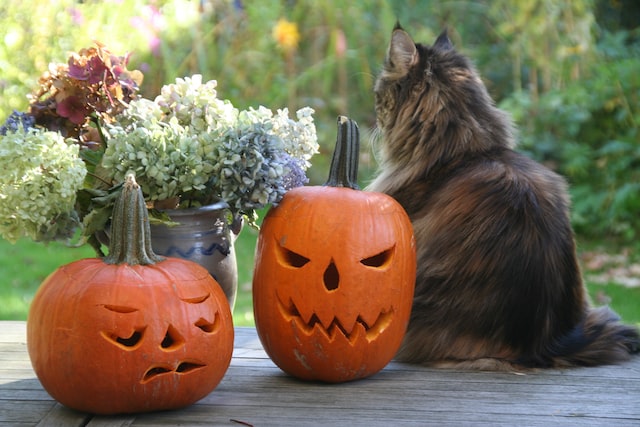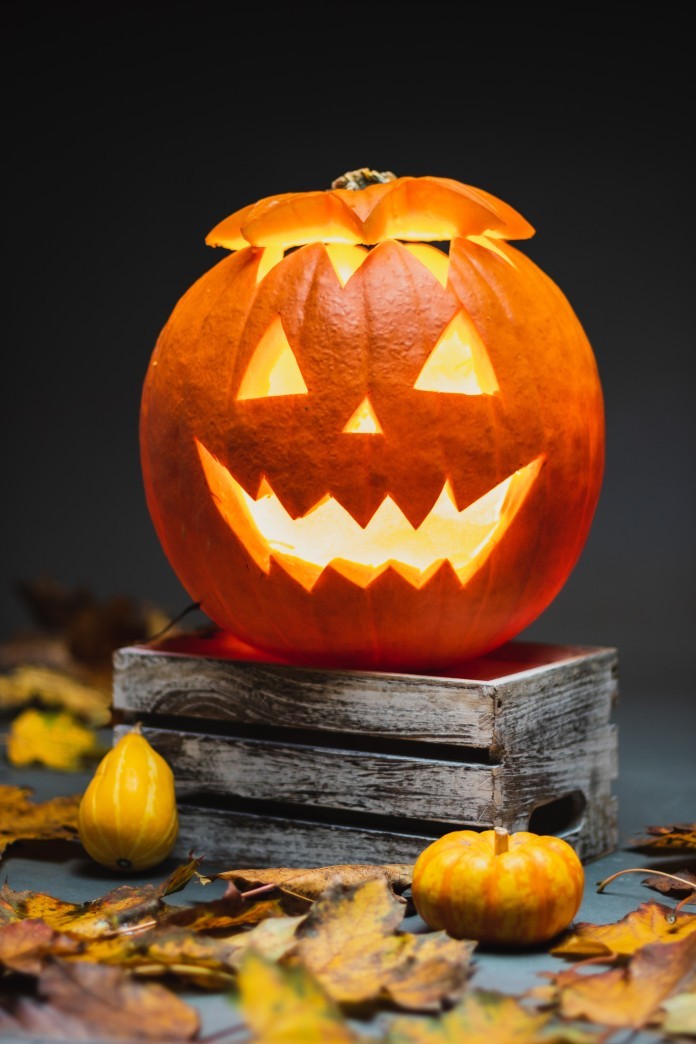October! Autumn and our thoughts turn to falling leaves and wood smoke, football games and tailgate parties, corn mazes and…PUMPKINS! Most anywhere you go you will find something to do with pumpkins. The coffee shop has pumpkin spice lattes. The bank teller has little plastic pumpkins at their window. The grocery store is selling pumpkin rolls. Bath and Bodyworks and the Hallmark store have pumpkin candles on display. Even the dollar stores, the pharmacies, and Hobby Lobby have their Fall and Halloween decorations for sale–including pumpkins and Jack O’Lanterns.

Why do we scrape out a perfectly good pumpkin, cut a face in it, and stick a candle inside… and who was Jack? The tradition of using a round vegetable to mimic a human face goes back thousands of years in Celtic cultures. The idea really took hold during the Celtic festival of Samhain, originally celebrated on November 1st. On Samhain eve, also known as All Hallows Eve when the spirits of the dead mingle with the living, these carved vegetable heads were used to ward off restless souls. Because metal lanterns were expensive, people would hollow out root vegetables such as beets, potatoes, and turnips, plentiful at the end of harvest, and put a burning coal inside. Carving the faces allowed the light to shine through the holes without extinguishing the ember.
The original Jack O’Lantern comes from an Irish folktale about a man named Stingy Jack. Stingy Jack invited the Devil to have a drink with him but didn’t want to pay for his drink. He convinced the Devil to turn himself into a coin that Jack could use to pay for their drinks. But once the Devil did so, Jack decided to keep the money and put it into his pocket next to a silver cross, preventing the Devil from changing back to his original form. Jack made a deal with the Devil, only to trick him several more times while extracting a promise that the Devil would never take his soul. Soon after, Jack died. However, God would not allow such an unsavory character into heaven. The Devil would not allow Jack into hell. Instead, he sent Jack off into the dark night to eternally wander the earth with only a burning coal to light his way. Jack put the coal into a carved-out turnip. The Irish began to call this ghostly man as “Jack of the Lantern” or simply “Jack O’Lantern.” The Celts would carve out vegetable head lanterns to scare away Jack should he come wandering by on Samhain Eve.

The idea of Jack O’Lanterns immigrated to America with the Irish and Scots around 1840. The use of a pumpkin for the lantern is uniquely an American inspiration born from Washington Irving’s “The Legend of Sleepy Hollow.” The headless horseman threw a flaming pumpkin at Ichabod Crane who was then never seen again. Pumpkins are indigenous to the Americas, even though gourds can be found worldwide. The best type of this winter squash to use for carving is a classic medium-sized, round orange pumpkin with a thin rind. Some notable varieties of carving pumpkins are Autumn Gold, Harvest Moon, Captain Jack, Howden, and, of course, Jack-O-Lantern pumpkins. Their thin flesh and rind make them easy to carve but are not particularly tasty for baking or cooking. However, their seeds, when toasted, make a delicious snack.
So this October, when you carve your pumpkin and enjoy your seeds, remember Stingy Jack who was doomed to wander the earth, and poor Ichabod Crane who was never seen again. On the night when the veil between the living and the dead is at its thinnest make sure your candle glows brightly.






